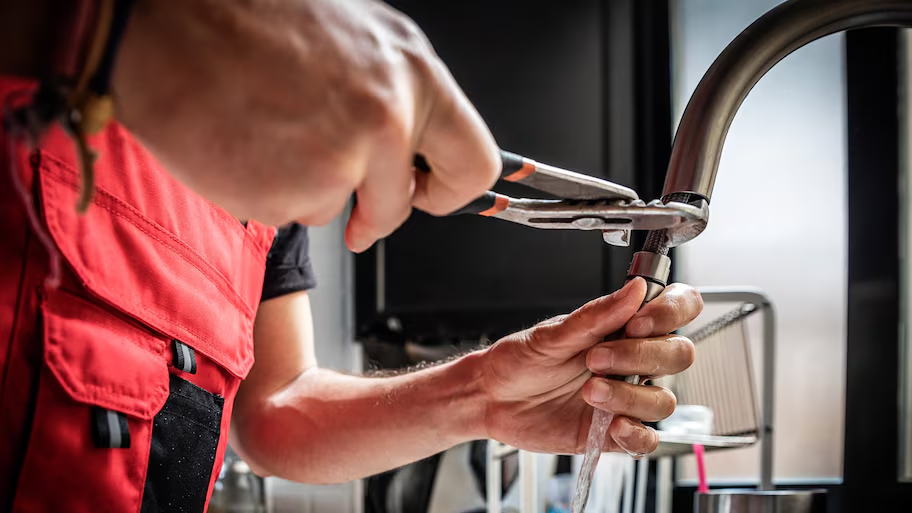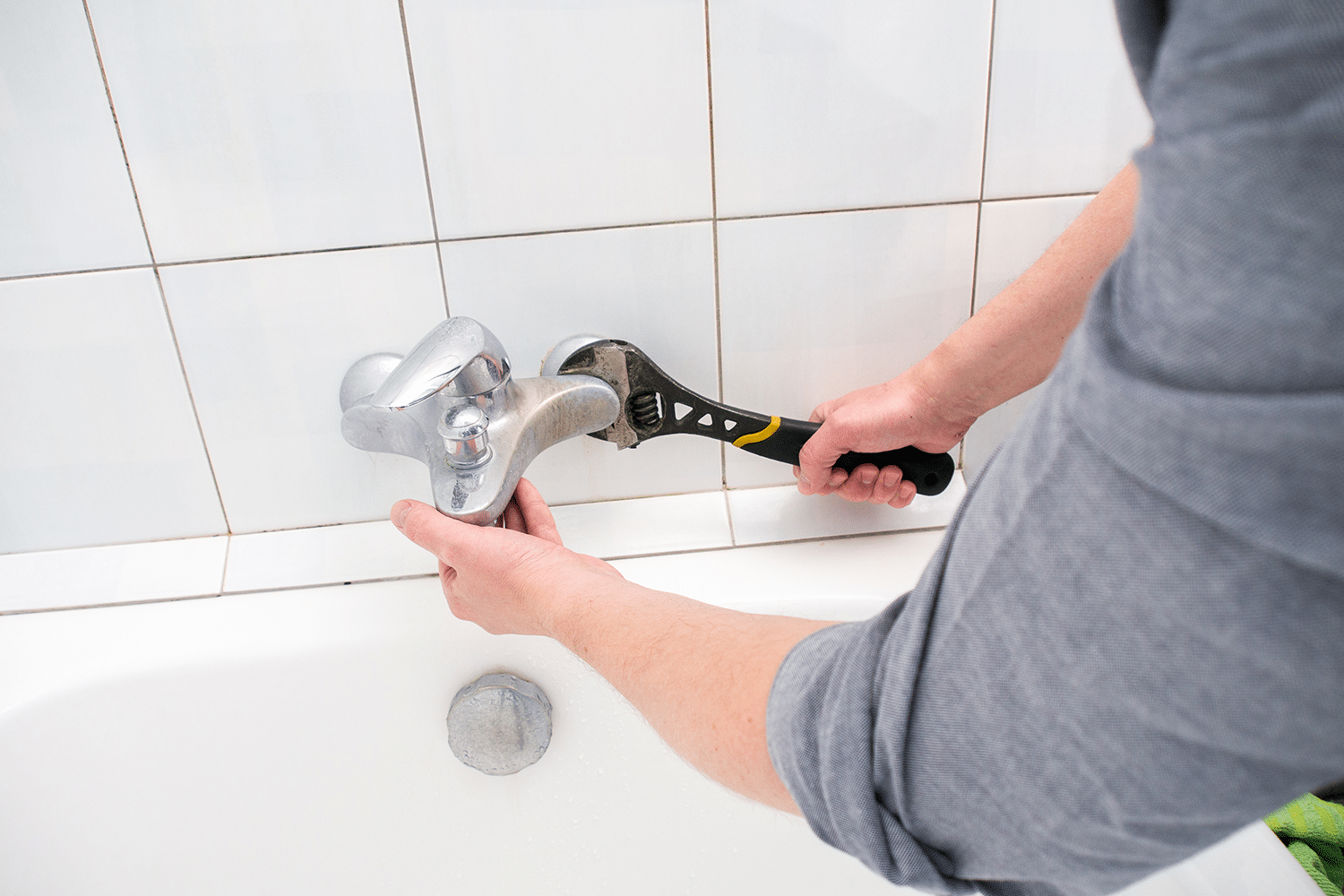Our Motives Behind Addressing a Dripping Faucet
Our Motives Behind Addressing a Dripping Faucet
Blog Article
We have found this great article on Why It's Important to Fix Leaky Faucets listed below on the internet and figured it made perfect sense to write about it with you on my blog.

Leaking taps might appear like a minor trouble, but their effect surpasses just the annoyance of the audio. From drainage to sustaining unneeded monetary prices and health dangers, neglecting a trickling faucet can bring about numerous repercussions. In this article, we'll explore why it's vital to resolve this usual household problem immediately and effectively.
Wastage of Water
Environmental Effect
Leaking taps add significantly to water wastage. According to the Environmental Protection Agency (EPA), a single faucet leaking at one drip per secondly can throw away greater than 3,000 gallons of water per year. This not just pressures water sources yet additionally influences communities and wildlife based on them.
Financial Expenses
Boosted Water Expenses
Beyond the environmental effect, trickling taps can blow up water costs considerably. The gathered wastefulness with time converts right into greater energy expenses, which could have been avoided with timely repairs.
Potential Residential Or Commercial Property Damage
Furthermore, prolonged dripping can lead to harm to components and surfaces bordering the tap. Water build-up can cause staining, deterioration, and also structural issues if left neglected, causing extra repair prices.
Wellness Worries
Mold and Mold Development
The constant presence of dampness from a leaking faucet develops an excellent atmosphere for mold and mold development. These fungi not just jeopardize indoor air high quality but additionally present health threats, particularly for people with breathing problems or allergies.
Waterborne Diseases
Stationary water in dripping taps can become a breeding place for germs and various other virus, boosting the risk of waterborne conditions. Contaminants such as Legionella microorganisms flourish in stationary water, potentially causing major ailments when ingested or breathed in.
Do it yourself vs. Professional Repair service
Pros and Cons of Do It Yourself Repair
While some might try to repair a trickling faucet themselves, DIY fixings come with their own set of obstacles. Without proper understanding and devices, do it yourself attempts can worsen the concern or lead to incomplete repair services, prolonging the trouble.
Benefits of Employing a Specialist Plumber
Working with a professional plumber guarantees that the underlying source of the trickling faucet is resolved efficiently. Plumbing professionals have the proficiency and devices to identify and fix tap concerns efficiently, saving time and lessening the danger of more damages.
Step-by-Step Overview to Repairing a Dripping Faucet
Tools Required
Before trying to fix a leaking faucet, gather the needed devices, consisting of a flexible wrench, screwdrivers, substitute components (such as washing machines or cartridges), and plumber's tape.
Typical Tap Issues and Their Solutions
Recognize the sort of tap and the specific issue causing the drip. Common problems consist of damaged washing machines, rusty valve seats, or defective O-rings. Refer to producer instructions or online tutorials for step-by-step advice on repairs.
Safety nets
Normal Upkeep Tips
To avoid leaking taps, do regular maintenance such as cleaning aerators, inspecting for leakages, and changing worn-out parts quickly. Additionally, take into consideration setting up water-saving gadgets or upgrading to much more efficient components.
Value of Prompt Repair Works
Dealing with dripping taps as soon as they're noticed protects against additional water wastage and prospective damage, ultimately conserving both water and money in the future.
Influence On Residential Property Value
Perception of Well-Maintained Building
Preserving a home in good condition, including dealing with upkeep problems like dripping taps, enhances its viewed value and charm among possible buyers or occupants.
Influence on Resale Value
Features with well-kept plumbing fixtures, including taps, command higher resale worths in the real estate market. Attending to trickling faucets can add to a favorable impression during building evaluations and arrangements.
Environmental Obligation
Specific Contribution to Conservation
Taking obligation for dealing with dripping faucets straightens with more comprehensive efforts toward water preservation and ecological sustainability. Every individual's actions jointly make a substantial impact on protecting priceless sources.
Sustainable Living Practices
By prioritizing punctual repair work and embracing water-saving routines, people contribute to sustainable living methods that benefit both present and future generations.
Final thought
Attending to a trickling tap goes beyond simple ease; it's an essential step toward conserving water, decreasing monetary expenses, and securing wellness and building. Whether through DIY repair services or specialist assistance, taking action to fix dripping faucets is a small yet impactful means to promote liable stewardship of sources and add to a much healthier, a lot more sustainable future.
How to Fix a Leaky Faucet: Step-by-Step Repair Guide
A leaky faucet may seem like a simple annoyance, but if it's not fixed promptly, that leak could cost hundreds to potentially thousands. From water damage to mold, mildew, and high water bills, even a tiny leak can be catastrophic if left unattended. Damage like this can even affect the overall value of your home, so it's important to take the right approach for leaky faucet repair. You may need the help of a plumber in some cases, but we've got a few tips you can try on how to fix a leaky faucet before calling the pros.
Four Faucet Types
When you're learning how to fix a leaky faucet, the first step is knowing what kind of faucet you're working with! There are four common types.
Cartridge Faucets
Cartridge faucets come in one- or two-handled varieties. In one-handled cartridge faucets, hot and cold water combines in a single cartridge. In the two-handled versions, hot and cold water are controlled separately and mixed in the faucet.
Ball Faucets
Ball faucets have a single lever you push up and down to adjust the pressure and rotate to change the temperature. A slotted metal ball controls the amount of water allowed into the spout.
Compression Washer Faucets
They're the oldest type of faucet, but they're still used in many homes — especially older ones. Compression faucets have two separate handles that, when turned, raise or lower the washer that seals a water valve. This valve stops water from flowing through the faucet when it is turned off.
Disc Faucets
Disc faucets rarely need to be repaired due to their maintenance-free design. The water flow is controlled by two discs — the upper one raises and lowers against a fixed lower disc, creating a watertight seal. If your disc faucet starts leaking, you may need to replace the seals or clean residue buildup from the inlets.
Fixing a Leaky Faucet
Step 1: Turn Off the Water
Whether you're learning how to fix a leaky bathtub faucet or how to fix a leaky kitchen faucet, always turn off the water supply to your working area when you're fixing a leak. The last thing you want is a flood added to your list of things to fix.
Look for the shutoff valves below your sink or around the tub and turn them clockwise to stop the water flow. If your faucet doesn't have shutoff valves, you may need to turn off the water for the whole house. Check to make sure it's off by turning the faucet on. If nothing comes out, you're ready to start the repair.
Step 2: Take Apart the Faucet
How you disassemble your faucet depends on the type of fixture you have. You can use a flathead screwdriver to remove the caps on top of the handle or handles for cartridge and compression faucets. Inside, you should see handle screws. Unscrew these with a screwdriver to remove the handle.
Disc- and ball-style faucets will typically have an inlet screw near the handle, and removing that will reveal the interior of the faucet.
Detach the Valve Stem
For cartridge- and compression-style faucets, you'll see the inner valve stem or cartridge once you remove the faucet handles. If you have a compression faucet, unscrew the brass valve stem. If you have a cartridge faucet, pull out the cartridge. If your cartridge has been in place for a while, it may require some tools or extra force to remove it due to mineral deposits.
Examine and Replace Parts
Once you've removed the parts, check them out to confirm what needs to be replaced. You may see corroded rubber washers, O-rings, stems, or cartridges. On a ball-style faucet, check the seats and springs for damage.
If you need to repair a leaky disc faucet, check the inlet and seals on the lower disc.
Once you determine what parts must be replaced, visit your local hardware store. Bring the damaged parts with you to ensure you can purchase the correct components to replace them.
Clean Valves and Faucet Cavity
If you've removed a stem or cartridge, you may notice mineral buildup in the faucet's threads. Use white vinegar to clean the valve seat by soaking it for a few minutes, then scrub it away with a soft toothbrush and rinse with warm water. You can also clean the interior of the faucet in the same way.
Reassemble the Faucet
Once your faucet is cleaned and the required parts have been replaced, it's time to reassemble it. Put the pieces back together and slowly turn the water supply back on. Doing this slowly is crucial because too much initial water pressure can damage the new hardware you've just installed.
https://homewarranty.firstam.com/blog/how-to-fix-leaky-faucet

Hopefully you liked our topic about Leaky Faucets: Why They Happen & What to Do About Them. Thanks a lot for taking a few minutes to read through our article post. Sharing is nice. One never knows, you could be helping someone out. Thank-you for going through it.
Report this page